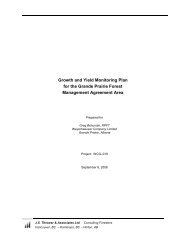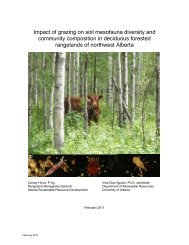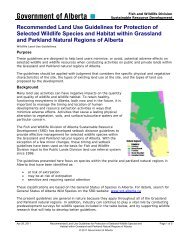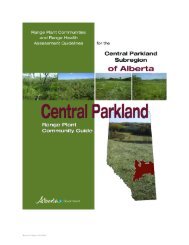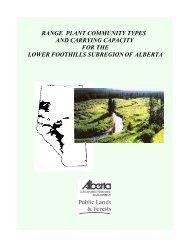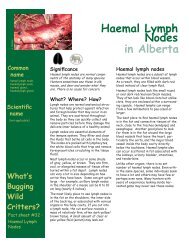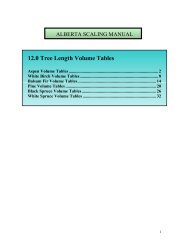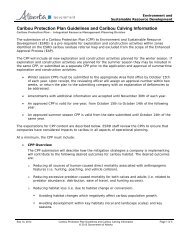Foothills Fescue Range Plant Community Guide - Sustainable ...
Foothills Fescue Range Plant Community Guide - Sustainable ...
Foothills Fescue Range Plant Community Guide - Sustainable ...
Create successful ePaper yourself
Turn your PDF publications into a flip-book with our unique Google optimized e-Paper software.
The <strong>Foothills</strong> <strong>Fescue</strong> Natural Subregion is dominated by Black Chernozemic soils (Table<br />
3). Parent materials are dominantly glacial till, an unsorted mixture of sand, silt and clay<br />
deposited directly from the ice. Glacio-lacustrine deposits are the next most common<br />
where silt and clay have settled from suspension from ice-marginal glacial lakes. Glacial<br />
fluvial (outwash) sediments occur in glacial meltwater channels, in middle and upper<br />
terraces of major creeks and river valleys. These deposits are often composed of greater<br />
than 20% gravel and cobbles, within a coarse matrix of loamy sand and sand, in lenses or<br />
bands. Residual and fluvial-aeolian parent materials have a minor occurrence in the<br />
subregion. Topography is dominantly undulating, but hummocky, inclined, level, rolling<br />
and ridged areas also occur. Drainage is dominantly north to the South Saskatchewan<br />
River drainage, but a drainage divide occurs on the north escarpment of the Milk River<br />
Ridge, and the drainage to the south flows to the Missouri River system.<br />
The level and undulating areas of the <strong>Foothills</strong> <strong>Fescue</strong> Natural Subregion are largely<br />
devoted to crop agriculture. Upland areas, including the Willow Creek Upland and the<br />
Del Bonita Plateau, are dominated by native vegetation and are used for livestock<br />
grazing.<br />
9



